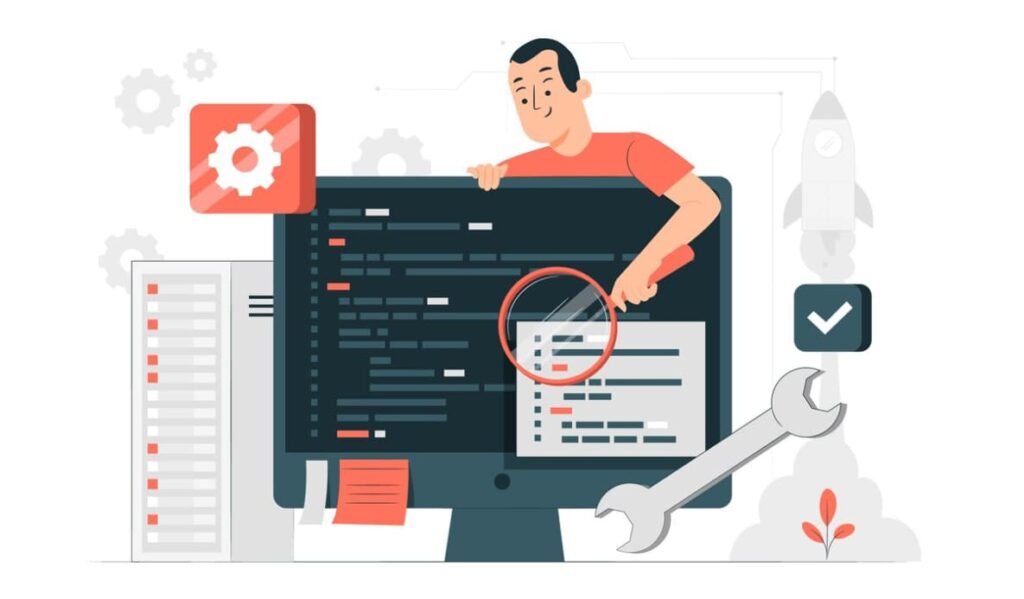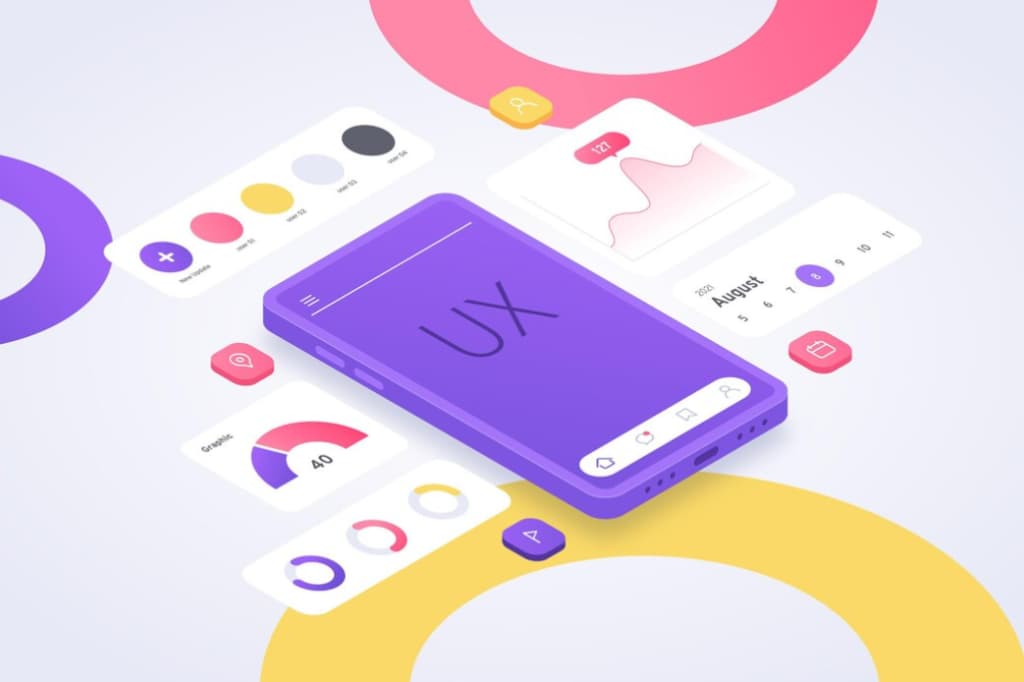Iterative development is a cornerstone of modern UX (User Experience) design processes, fostering continuous improvement through repeated cycles of design, testing, and refinement. This approach allows designers to create more user-centric products by integrating feedback at each stage. Here’s a comprehensive look at how iterative development shapes and enhances the UX design process.
Iterative Evolution in UX Design
The process of User Experience (UX) design is often characterized by its iterative nature, diverging from a strictly linear approach. The core objective of UX design is to forge a final product that embodies key usability traits: simplicity in learning and recall, efficiency, enjoyable interaction, and a minimal error rate.
In the rapidly shifting landscape of modern technology, encompassing application, website, artificial intelligence (AI), and augmented reality (AR) development, it’s crucial for UX designers and developers to continually adapt and refine their skills. This necessity is accentuated by the evolving demands of product development, ensuring both effectiveness and efficiency. The UX design process is inherently fluid, with stages frequently overlapping; designers engage in a continuous cycle of ideation, analysis, creation, and testing. This fluidity makes iterative development an ideal fit for UX design.
Iterative development, a key methodology within the software development life cycle (SDLC), revolves around the concept of gradual progress through repeated cycles or iterations, often in smaller, more manageable segments. This method enables developers and designers to leverage insights gained in each iteration, allowing for timely adjustments to the user interface (UI) and functional features, followed by further iteration and enhancement.
Iterative Development Model
The Iterative Development Model represents an approach to Software Development Life Cycle (SDLC) that places a primary emphasis on simplified implementation. Complexity and a broader array of features progressively evolve through successive iterations until the final product is realized. Let’s delve deeper into the nature of this model and its origins.
As described by Goodcore, the Iterative Development Model operates on a systematic repetition of small cycles in software development, termed iterations. The fundamental concept involves breaking down the overall project into smaller, well-defined scopes with specified durations. Throughout each iteration, the design and development process continually evolves, allowing for immediate implementation of updates. The result is a new version of the product generated after each iteration, ultimately leading to the achievement of the desired end product.
Evolution of Iterative Development
The genesis of iterative development traces back to efficiency improvement practices, though it initially wasn’t explicitly associated with software development. Instead, its roots can be found in methodologies like Kanban or waterfall, where projects were systematically divided into linear sequential phases, each contingent on the deliverables of its predecessor. These early concepts laid the groundwork for novel approaches to development, gradually paving the way for the evolution of iterative development.
- 1950s: The Kanban method paved the way for the iterative development model, drawing inspiration from lean production principles that emphasized efficiency, rapid delivery, and phased enhancements;
- 1960s: Craig Larman and Victor Basili’s article “Iterative and Incremental Development: A Brief History” highlights early instances of iterative development, citing NASA’s Project Mercury in the 1960s as one of the earliest examples;
- Early 1980s: Barry Boehm’s empirical study in the early 1980s marked a notable shift in attention towards iterative approaches. In his paper, “A Spiral Model of Software Development and Enhancement,” Boehm presented an iterative model focused on identifying and mitigating risks through various approaches;
- 1995: Alistair Cockburn’s work, “Growth of Human Factors in Application Development,” proposed that the acceptance of iterative approaches was influenced by a shift in the development bottleneck to the learning process. Recognizing human learning as a trial-and-error (iterative) endeavor, this approach was seen as a means to expedite software development with fewer errors;
- 2001: Alan MacCormack’s study identified iterative and incremental development (IID) as a key success factor in recent projects;
- 2004-present: Microsoft and other developers adopted iterative strategies in software development. The introduction of agile and lean methodologies in recent years has further shifted focus towards iterative model-based approaches.
The Five Stages of Iterative Development
Embarking on the iterative development journey involves a carefully orchestrated process that unfolds in five key stages.
- In the initial phase, Planning and Analysis, teams meticulously outline requirements, compile essential documentation, and devise a timeline for the inaugural iteration cycle;
- The second stage, Design, empowers UX design teams to establish technical prerequisites for the architecture, encompassing language, services, and data layers;
- Moving forward to the third stage, Implementation, the development team brings the envisioned functionality and design to life, aligning with the specified requirements;
- Stage four, Testing, becomes the spotlight for identifying and addressing issues, bugs, and discrepancies in functionality or performance;
- The fifth and final stage, Evaluation, serves as the checkpoint where the iteration undergoes scrutiny against the initial requirements and expectations set in stage one.
Upon completion of all five stages, the most recent iteration and evaluation feedback circle back to stage one, initiating the process anew. This iterative loop ensures continuous refinement and enhancement of the app, website, or product.
Enhancing UX Design Through Iterative Development
Now that we’ve outlined the steps in the iterative development process, let’s delve deeper into each stage and understand their specific contributions to the UX design process.

Planning & Analysis
In the initial planning and analysis stage, the journey begins with client meetings to discern software, app, or website requirements, along with business and stakeholder needs. A comprehensive understanding of the context and end product requirements is crucial before embarking on the UX design process. Once requirements are gathered, the focus shifts to analysis, ensuring a smooth development process. It’s worth noting that this stage lays the foundation for subsequent steps, requiring the creation of a plan and timeline for the first iterative cycle.
Design
In the realm of UX design, the Design stage unfolds with various activities, including crafting the information architecture and developing the actual user interface (UI) design. This phase encompasses the creation of sketches, wireframes, prototypes, or design specifications. In the context of software development, this is where the team establishes technical requirements such as languages, data layers, and services.
Implementation
The implementation stage marks the commencement of the development process, where the development and/or design team translates requirements and user feedback into tangible progress. At this juncture, the meticulously crafted specifications, planning documents, and design blueprints are put into action through coding and development.
Testing
Following the coding and development phase, the testing stage becomes paramount. This is the juncture where the development team meticulously examines the product for potential bugs or oversights that may have occurred during implementation. User testing, involving stakeholders, end-users, and product testers, becomes a pivotal step to ensure the functionality and user experience align with expectations.
Evaluation
Upon the completion of all preceding stages, a comprehensive evaluation becomes imperative. The team, along with clients or stakeholders, engages in a thorough examination of the project, providing feedback on necessary changes that must be implemented for refinement and enhancement.
The Impact of Iterative Development
While the iterative development process may not be a one-size-fits-all solution for every UX design project, it can prove highly effective under specific circumstances:
- When requirements are not clearly defined but are easily understandable;
- When dealing with high-risk features that might undergo changes;
- In the case of large-scale apps or websites;
- When major requirements are established, but some details are subject to change.
The paramount advantage of iterative development lies in its ability to enhance usability. The ultimate goal is to create a product that delivers optimal usability and an exceptional user experience (UX). Iterative development facilitates a swift turnaround and efficient issue resolution, enabling designers to create and test ideas rapidly. Its adaptability, efficiency, and cost-effectiveness make it a valuable approach.
As the Nielsen Norman Group suggests, “Redesigning user interfaces on the basis of user testing can substantially improve usability. In four case studies, the median improvement in overall usability was 165% from the first to the last iteration, and the median improvement per iteration was 38%.” This underscores the significant impact that iterative development, coupled with user testing, can have on achieving superior usability and UX.
Enhancing Your UX Design Workflow

- From shaping product definitions to intricate design phases and rigorous testing, optimizing your UX design process is paramount. It’s crucial to ensure that your team can craft end products that not only guarantee optimal usability and user experience (UX) but also surpass user expectations and needs. Taking a closer look at your current process and identifying areas for improvement becomes essential;
- Given the frequent overlap of UX design phases, exploring the merits of the iterative development process can prove advantageous. Embracing the repetitive nature of this methodology enables your UX design team to streamline their efforts, fostering efficiency in creating end products. More significantly, it ensures that the final outcomes not only meet but potentially exceed user expectations and needs;
- Ultimately, the crux of the matter is that a compelling UX is instrumental in retaining your customers. Delve deeper into the realm of iterative development to uncover how it can become a catalyst for refining and fortifying your UX design process, leading to heightened efficiency and user satisfaction.
Conclusion
Iterative development is not just a process but a mindset that encourages constant evolution and adaptation. By embracing this cyclical process, UX designers can ensure that they are not just designing for users but with them. The result is a product that is not only functional and aesthetically pleasing but also deeply connected to the user’s needs and preferences. As the digital landscape continues to evolve, iterative development will remain an essential practice for creating exceptional user experiences.
